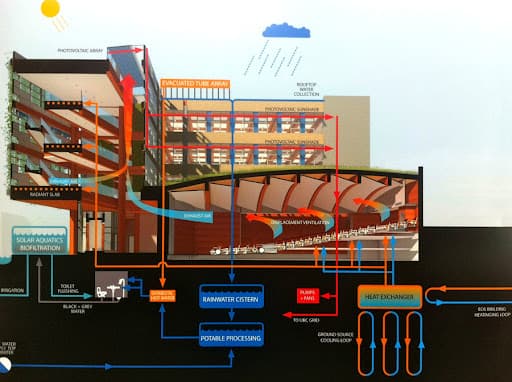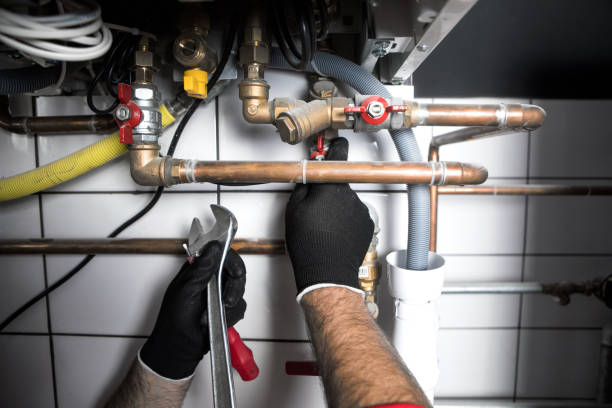Exploring The Layout of Your House's Plumbing System
Additional InformationThe author is making several great points relating to Understanding Your Home's Plumbing Anatomy as a whole in this great article following next.

Comprehending just how your home's pipes system works is important for every property owner. From providing tidy water for drinking, food preparation, and bathing to securely removing wastewater, a well-maintained plumbing system is essential for your family's health and convenience. In this comprehensive overview, we'll explore the detailed network that makes up your home's pipes and offer tips on maintenance, upgrades, and taking care of typical problems.
Intro
Your home's plumbing system is greater than simply a network of pipelines; it's a complicated system that ensures you have accessibility to tidy water and reliable wastewater elimination. Understanding its components and how they interact can help you stop costly repair work and guarantee whatever runs smoothly.
Basic Components of a Pipes System
Pipes and Tubes
At the heart of your pipes system are the pipelines and tubes that lug water throughout your home. These can be constructed from numerous products such as copper, PVC, or PEX, each with its benefits in regards to longevity and cost-effectiveness.
Components: Sinks, Toilets, Showers, and so on.
Components like sinks, bathrooms, showers, and bathtubs are where water is made use of in your home. Recognizing exactly how these components link to the pipes system assists in diagnosing troubles and preparing upgrades.
Valves and Shut-off Factors
Valves control the circulation of water in your plumbing system. Shut-off shutoffs are important throughout emergency situations or when you need to make repair work, allowing you to isolate parts of the system without disrupting water flow to the entire house.
Water System
Main Water Line
The major water line connects your home to the metropolitan water or an exclusive well. It's where water enters your home and is distributed to numerous fixtures.
Water Meter and Stress Regulator
The water meter procedures your water usage, while a pressure regulatory authority makes sure that water streams at a risk-free pressure throughout your home's pipes system, avoiding damages to pipes and components.
Cold Water vs. Warm water Lines
Comprehending the distinction between cold water lines, which supply water straight from the primary, and hot water lines, which bring warmed water from the water heater, aids in troubleshooting and preparing for upgrades.
Drainage System
Drain Pipes Water Lines and Traps
Drain pipelines bring wastewater far from sinks, showers, and toilets to the sewer or sewage-disposal tank. Traps avoid sewage system gases from entering your home and also trap particles that can create obstructions.
Ventilation Pipes
Ventilation pipes enable air right into the drain system, protecting against suction that can slow drainage and trigger catches to vacant. Proper ventilation is essential for preserving the integrity of your plumbing system.
Value of Correct Drainage
Guaranteeing correct drain avoids back-ups and water damages. Frequently cleaning up drains pipes and keeping catches can protect against costly fixings and expand the life of your pipes system.
Water Heating Unit
Kinds Of Water Heaters
Water heaters can be tankless or traditional tank-style. Tankless heaters warm water as needed, while storage tanks store warmed water for immediate use.
How Water Heaters Connect to the Plumbing System
Comprehending just how water heaters link to both the cold water supply and hot water distribution lines assists in identifying issues like insufficient hot water or leakages.
Upkeep Tips for Water Heaters
Regularly flushing your water heater to get rid of sediment, checking the temperature level settings, and inspecting for leakages can prolong its life-span and enhance energy effectiveness.
Usual Plumbing Problems
Leakages and Their Causes
Leakages can happen as a result of aging pipes, loosened fittings, or high water pressure. Dealing with leaks without delay protects against water damage and mold development.
Blockages and Blockages
Obstructions in drains and commodes are commonly triggered by purging non-flushable products or an accumulation of grease and hair. Using drain screens and being mindful of what drops your drains pipes can protect against obstructions.
Signs of Pipes Problems to Watch For
Low tide pressure, slow drains, foul odors, or uncommonly high water bills are signs of potential pipes problems that should be addressed immediately.
Plumbing Maintenance Tips
Normal Assessments and Checks
Arrange yearly plumbing inspections to capture problems early. Search for indicators of leaks, corrosion, or mineral buildup in faucets and showerheads.
Do It Yourself Maintenance Tasks
Straightforward jobs like cleansing tap aerators, checking for toilet leakages using color tablets, or shielding exposed pipelines in chilly climates can protect against significant plumbing issues.
When to Call a Professional Plumbing Professional
Know when a pipes concern calls for specialist knowledge. Trying intricate repairs without correct understanding can result in even more damage and higher repair work prices.
Upgrading Your Plumbing System
Factors for Upgrading
Upgrading to water-efficient fixtures or changing old pipelines can improve water high quality, minimize water costs, and raise the worth of your home.
Modern Pipes Technologies and Their Benefits
Explore innovations like wise leakage detectors, water-saving commodes, and energy-efficient water heaters that can save cash and minimize ecological influence.
Cost Considerations and ROI
Determine the upfront expenses versus lasting savings when thinking about pipes upgrades. Several upgrades pay for themselves through minimized energy bills and less fixings.
Environmental Effect and Conservation
Water-Saving Components and Appliances
Mounting low-flow faucets, showerheads, and bathrooms can significantly minimize water use without compromising efficiency.
Tips for Reducing Water Use
Straightforward habits like taking care of leakages immediately, taking much shorter showers, and running full tons of laundry and dishes can save water and reduced your utility costs.
Eco-Friendly Pipes Options
Take into consideration lasting plumbing products like bamboo for floor covering, which is durable and green, or recycled glass for kitchen counters.
Emergency situation Preparedness
Steps to Take During a Pipes Emergency situation
Know where your shut-off valves are located and just how to switch off the water system in case of a ruptured pipe or major leakage.
Value of Having Emergency Contacts Convenient
Keep contact information for neighborhood plumbers or emergency situation services easily offered for fast action throughout a pipes dilemma.
DIY Emergency Fixes (When Appropriate).
Short-lived fixes like utilizing duct tape to spot a dripping pipeline or putting a bucket under a dripping faucet can lessen damage until an expert plumbing professional gets here.
Conclusion.
Understanding the anatomy of your home's pipes system encourages you to preserve it successfully, conserving money and time on repairs. By complying with normal upkeep routines and staying notified regarding contemporary pipes modern technologies, you can ensure your plumbing system runs efficiently for years to come.
Exploring Your Homes Plumbing Anatomy
Water Supply System
Main Water Line: This is where water enters your home from the municipal supply or a private well.
Water Meter: Typically located near where the main water line enters the property, it measures the amount of water used.
Shutoff Valve: It s crucial to know where this is in case of emergencies. It allows you to turn off the water supply to the entire house.
Pipes and Fittings: These distribute water throughout your home. Materials can include copper, PVC, or PEX.
Drain-Waste-Vent (DWV) System
Drains: Located in sinks, showers, and tubs, these carry wastewater away.
Traps: U-shaped pipes under sinks that hold standing water, blocking sewer gases from entering the home.
Vents: Pipes that lead from the DWV system to the outside, preventing vacuum formation and allowing gases to escape.
Sewer Line: Carries all wastewater from the home to the municipal sewer system or a septic tank.
Fixtures and Appliances
Sinks, Toilets, and Showers
Dishwashers and Washing Machines
Water Heaters
Maintenance Tips
Regularly check for leaks in exposed pipes and around fixtures.
Inspect the water heater annually for signs of wear.
Clean drains and traps to prevent clogs and odors.
Know how to shut off water to individual fixtures.
When to Call a Professional
Major leaks or burst pipes
Installation of new pipes or fixtures
Septic tank issues
Remodeling projects that involve plumbing changes
Conclusion
Understanding the anatomy of your home's plumbing is key to maintaining a functional and efficient system. Regular checks and knowing when to call in the experts can save you time, money, and stress.
https://www.mavyn.com/blog/exploring-your-homes-plumbing-anatomy

Exploring Your Homes Plumbing Anatomy
Water Supply System
Drain-Waste-Vent (DWV) System
Fixtures and Appliances
Maintenance Tips
When to Call a Professional
Conclusion
Understanding the anatomy of your home's plumbing is key to maintaining a functional and efficient system. Regular checks and knowing when to call in the experts can save you time, money, and stress.
https://www.mavyn.com/blog/exploring-your-homes-plumbing-anatomy
I ran across that article about Exploring Your Homes Plumbing Anatomy while doing a lookup on the internet. Do you know about anybody else who is sincerely interested in the subject? Why not promote it. Thanks a lot for your time spent reading it.
Call Today